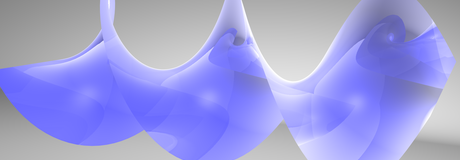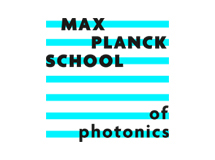Selected Research Areas
For a complete overview of scientific group activities, please check out our publications.
Complex Field Engineering and Measurement

Complex Field Engineering and Measurement
We study the generation, theoretical description and experimental measurement of both complex paraxial as well as tightly focused light beams. Amongst other techniques, we developed an experimental method for the reconstruction of the full vectorial field distirbutions (amplitudes and phases) of tightly focused light beams with deep sub-wavelength spatial resolution.
Transverse Angular Momentum of Light
Transverse Angular Momentum of Light
Transverse spin describes electric and magnetic field vectors spinning around an axis perpendicular to the propagation direction of the light wave. The polarization states occurs naturally whenever light is strongly confined, with typical examples being waveguide modes, surface plasmon polaritons and tightly focused beams of light. Within this project, we develop experimental techniques capable of sensing the transverse spin density in such highly confined fields and demonstrate specially designed, polarization tailored beams carrying net transverse spin angular momentum.
Towards Polarization Tailored Raman Spectroscopy

Towards Polarization Tailored Raman Spectroscopy
In this project, we study the capabilities of utilizing complex 3D nanostructured light for Raman spectroscopy. Owing to the polarization-dependent coupling to vibrational modes in the sepcimen, different Raman spectra are observed for Raman-active nanostructures exposed to different field configurations in structured light. By analysing position-dependent Raman spectra, structural and geometrical information about the system under study can be retrieved.
Novel Detectors and Their Applications
Novel Detectors and Their Applications
As part of the European Union's Horizon 2020 Research and Innovation programme, we co-develop, together with several partners, a new integrated sensor platform, which will revolutionise the way we process light by full utilisation of its fundamental properties. Furthermore, we study various applications of this novel detector platform in nano-optics and imaging. Learn more about this on our project website.
Angström Localization

Angström Localization
By talking advantage of our decade long expertise in vector beams and nanoscale light-matter interaction, we recently have been able to experimentally localize individual nanoparticles with sub-Angström accuracy and precision. Using tightly focused vector beams, a transverse Kerker dipole is excited in the nanoparticle to obtain directional scattering, which is position-dependent and optimized to be very sensitive to even tiny displacements on the order of a few Angströms. Such localization scheme might find many applications related to stabilization of microscopy and nanometrology setups. Moreover, evanescent coupling of the directionally scattered light to waveguides also holds great potential for the realization of all-integrated localization devices.
Polarization Topologies in Structured Light

Polarization Topologies in Structured Light
In structured light, the polarization can form three-dimensional, spatially varying landscapes, featuring complex phase and field distributions. For instance, the polarization might exhibit a 3D topological structure shaped like a Möbius strip and ribbon. Proposed theoretically for intersecting collimated light beams about a decade ago, we experiemntally study these highly unusual objects at the nanoscale.
Structured Light and ENZ Materials

Structured Light and ENZ Materials
Epsilon near zero (ENZ) materials offer a variety of fascinating optical properties paving the way for many different applications. In a series of projects, we utilize structured and unstructured ENZ films interacting with strcutured light. Also, the extraordinary nonlinear properties of ENZ materials are explored and exploited in future experiments.
Novel Dipole Moments

Novel Dipole Moments
In recent years the rising interest in specially tailored electromagnetic dipoles as a tool for nano-photonic devices and metasurfaces led to the development of novel dipole moments e.g. the Huygens and Janus dipoles, allowing for highly efficient routing and polarization conversion of light at the nanoscale. In this project we present the excitation scheme and spectral investigation of a new element added to this toolbox. In particular we induce parallel electric and magnetic dipole moments, phase-shifted by pi/2, in an achiral silicon nanoparticle, leading to an emission of light with well-defined helicity and chirality.
Material-Heterogeneity-Induced Optical Activity

Material-Heterogeneity-Induced Optical Activity
Chirality is a geometric property of objects lacking mirror symmetry. A chiral object can exist in two forms of opposite handedness, which can be distinguished via their interaction with circularly polarized light. In our research, we fabriacte heterogeneous particle ensembles and show experimentally as well as theoretically that mirror-symmetric geometrically achiral heterostructures exhibit chiroptical behaviour. We study this phenomenon in detail for different particle systems.
Studying Individual Nanosystems

Studying Individual Nanosystems
To study complex nanoscopic systems, we designed and built highly versatile and flexible experimental tools and setups. The sub-wavelength dimensions of the systems under study, as well as the spatially varying electric and magnetic field distributions utilized as excitation allow for the realization of a manifold of different coupling scenarios within a single beam configuration (selective excitation of resonances) just depending on the location of the nanostructure relative to the beam. The interaction of individual nanostructures with complex field distributions is also studied both numerically and analytically.
Optical Angular Momentum and Chiral Matter

Optical Angular Momentum and Chiral Matter
We study nanostructures, which exhibit intriguing and exotic properties, such as chirality. For instance, we investigate the chiroptical response of a single plasmonic nanohelix interacting with a focused circularly-polarized Gaussian beam. The optical scattering ais characterized experimentally, and the chiral behavior of the nanohelix is explained based on a multipole analysis. Other projects based on individual chiral nanostructures are on-going.
Optical Properties of Novel Hybrid Materials

Optical Properties of Novel Hybrid Materials
We investigate the optical behavior of a novel metamaterial based on a carbon structure intercalated with gold and silver nanoparticles (carbon flakes). We perform experimental far-field polarization analysis based on a microscopic Müller matrix technique to experimentally extract optical properties of such carbon flakes.
Novel weak-measurement-inspired schemes for nano-optical applications

Novel weak-measurement-inspired schemes for nano-optical applications
Inspired by optical weak measurement schemes, we develop and experimentally implement a novel polarization-based post-selection technique using a cylindrical polarization basis. This method enables the precise measurement of dipole moments of emitters and the localization of nanoparticles. It opens new avenues in the fields of nano-metrology, nano-optics and imaging.
Forces in Optical Tweezers

Forces in Optical Tweezers
The optical force acting on a dipole-like dielectric particle can be decomposed into various constituents. Strength and direction of each force component depend on the optical parameters of the particle, the ambient medium and the structure of the surrounding light field. In a series of projects, we investigate such forces and torques occurring in structured trapping beams and potential applicaitons in sensing and manipulation.





